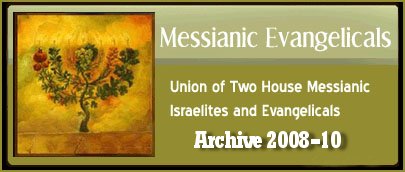RESOURCES
5-144000
A
B
C
D
E
F
G
H
I
J
K
L
M
N
O
P
Q
R
S
T
U
V
W
Y
Z
|
|

|
What was the clothing of second temple times?
Posted by Lev/Christopher on January 6, 2009 at 4:49am
in Judaism
Edersheim (the Life and Times of Jesus the Messiah)
elaborates on five articles of clothing “…the shoes, the head-covering,
the Tallith or upper cloak, the girdle, the Chaluq or under-dress, and
the Aphqarsin or innermost covering.”
Footwear would be “shoes (Manalim) and sandals (Sandalim). The former,
which were sometimes made of very coarse material, covered the whole
foot, and were specially intended for winter or rainy weather; while
the sandals, which only protected the soles and sides of the feet, were
specially for summer use.”
Head Covering “In regard to the covering of the head, it was deemed a
mark of disrespect to walk abroad, or to pass a person, with bared
head.”
The ordinary covering of the head was the so-called Sudar (or
Sudarium), a kerchief twisted into a turban, and which might also be
worn round the neck. A kind of hat was also in use, either of light
material or of felt (Aphilyon shel rosh, or Philyon). The Sudar was
twisted by Rabbis in a peculiar manner to distinguish them from others.
We read besides of a sort of cap or hood attached to some kinds of
outer or of inner garments.”
Undergarment “First came the under-garment, commonly the Chaluq or the
Kittuna (the Biblical Kethoneth), from which latter some have derived
the word ‘cotton.’ The Chaluq might be of linen or of wool. The sages
wore it clown to the feet. It was covered by the upper garment or
Tallith to within about a handbreadth. The Chaluq lay close to the
body, and had no other opening than that round the neck and for the
arms. At the bottom it had a kind of hem. To possess only one such
‘coat’ or inner garment was a mark of poverty."
Closely similar to, if not identical with, the Chaluq, was the ancient
garment mentioned in the Old Testament as Kethoneth, to which the Greek
‘Chiton’ corresponds. As the garment which our Lord wore, and those of
which He spoke to His Apostles are designated by that name, we conclude
that it represents the well-known Kethoneth or Rabbinic Kittuna. This
might be of almost any material, even leather, though it was generally
of wool or flax. It was sleeved, close-fitting, reached to the ankles,
and was fastened round the loins, or just under the breast, by a
girdle. One kind of the latter, the Pundah or Aphundah,was provided
with pockets or other receptacles,..."
Upper Cloak “The Gunda was a peculiarly Pharisaic garb. But the upper
garment which Jesus wore would be either the so-called Goltha, or, most
likely, the Tallith. Both the Goltha and the Tallith were provided, on
the four borders, with the so-called Tsitsith, or ‘fringes.’ These were
attached to the four corners of the outer dress, in supposed fulfilment
of the command, Numb. 15:38–41; Deut. 22:12. At first, this observance
seems to have been comparatively simple. The question as to the number
of filaments on these ‘fringes’ was settled in accordance with the
teaching of the School of Shammai. Four filaments (not three, as the
Hillelites proposed), each of four finger-lengths (these, as later
tradition put it, doubled), and attached to the four corners of what
must be a strictly square garment—such were the earliest rules on the
subject. The Mishnah leaves it still a comparatively open question,
whether these filaments were to be blue or white. But the Targum makes
a strong point of it as between Moses and Korah, that there was to be a
filament of hyacinth colour among four of white. It seems even to imply
the peculiar symbolical mode of knotting them at present in use.
Further symbolic details were, of course, added in the course of time.
As these fringes were attached to the corners of any square garment,
the question, whether the upper garment which Jesus wore was the Goltha
or the Tallith, is of secondary importance. But as all that concerns
His Sacred Person is of deepest interest, we may be allowed to state
our belief in favour of the Tallith. Both are mentioned as distinctive
dresses of teachers, but the Goltha (so far as it differed from the
Tallith) seems the more peculiarly Rabbinic."
Aphikarsus Edersheim isn’t very clear on why this is considered an
"Innermost Covering" and his description is a bit confusing:
“Aphikarsus seems to have been an article of luxury rather than of
necessity. Its precise purpose is difficult to determine. A comparison
of the passages in which the term occurs conveys the impression, that
it was a large kerchief used partly as a head-gear, and which hung down
and was fastened under the right arm. Probably it was also used for the
upper part of the body.”
First Century Clothing
Typical clothing for a man in the First Century seems pretty foreign to Westerners.

Tunic, Chaluq, Kitunna, or Colobium
Illustration from Madelieine S. and J. Lane Miller, Harper's
Encyclopedia of Bible Life (Third Revised Edition, Harper & Row,
1978), p. 55.
* Tunic, the Chaluq, Kittuna, or colobium, a long, close-fitting tunic
made of linen or wool and worn next to the skin. It had an opening for
the neck and sometimes sleeves. It was worn long, perhaps to the
ankles, and fastened with a girdle or belt of linen or leather around
the waist or under the breast. We know that Jesus' garment was seamless
(John 19:23). http://jesuswalk.com/images/tunic.gif
* Cloak, the Tallith or Goltha. This was a square garment that bore
tassels at the corners in fulfillment of the commands in Numbers
15:38-39 and Deuteronomy 22:12 as a reminder to obey the laws of the
Lord. The strands that made up the tassel probably included at least
one of hyacinth (light violet to moderate purple) color and several
strands of white. In Luke 8:44 the outer clothing is expressed by the
Greek word himation, "cloak, robe."[3]
* Head-gear, possibly a turban, or a covering for the head, back of the
neck, and shoulders. There is some dispute about whether men wore these
in Jesus' day, since there is no mention in the New Testament.
* Sandals[4]
Sometimes Bible commentators refer to undergarments and outer garments,
but the inner garments were not like our underwear that are worn
invariably under our other clothing. In Jesus' day the tunic was
visible under the cloak. It was more the "layered look" that was
fashionable around the turn of the Twenty-First Century.
Where Luke records, "She came up behind him and touched the edge of his
cloak" (8:44), the word translated "edge" is Greek kraspedon, " 'edge,
border, hem' of a garment." But it can also refer to the "tassel" that
Israelites wore on the four corners of the cloak.[5] We're not exactly
sure which is referred to in this verse.
References
3. BAGD376
4. There is a detailed description in Edersheim, L&T 1:622-25. See
also Leona Glidden Running, "Garments," ISBE 2:401-407. Also Madeleine
S. and J. Lane Miller, Harper's Encyclopedia of Bible Life (Third
Revised Edition; Harper & Row, 1978), p. 54.
5. BAGD448.
6. BAGD207-208.
-
Reply by Rebecca (Rivkah) McFarland on January 8, 2009 at 3:49pm
-
-
-
Reply by Lev/Christopher on January 9, 2009 at 12:09am
-
-
-
Reply by Avah on January 9, 2009 at 12:14am
-
-
-
Reply by Rebecca (Rivkah) McFarland on January 13, 2009 at 5:00pm
-
-
|


This page was created on 5 May 2010
Updated on 5 May 2010
Copyright © 1987-2010 NCCG - All Rights Reserved
|
|


